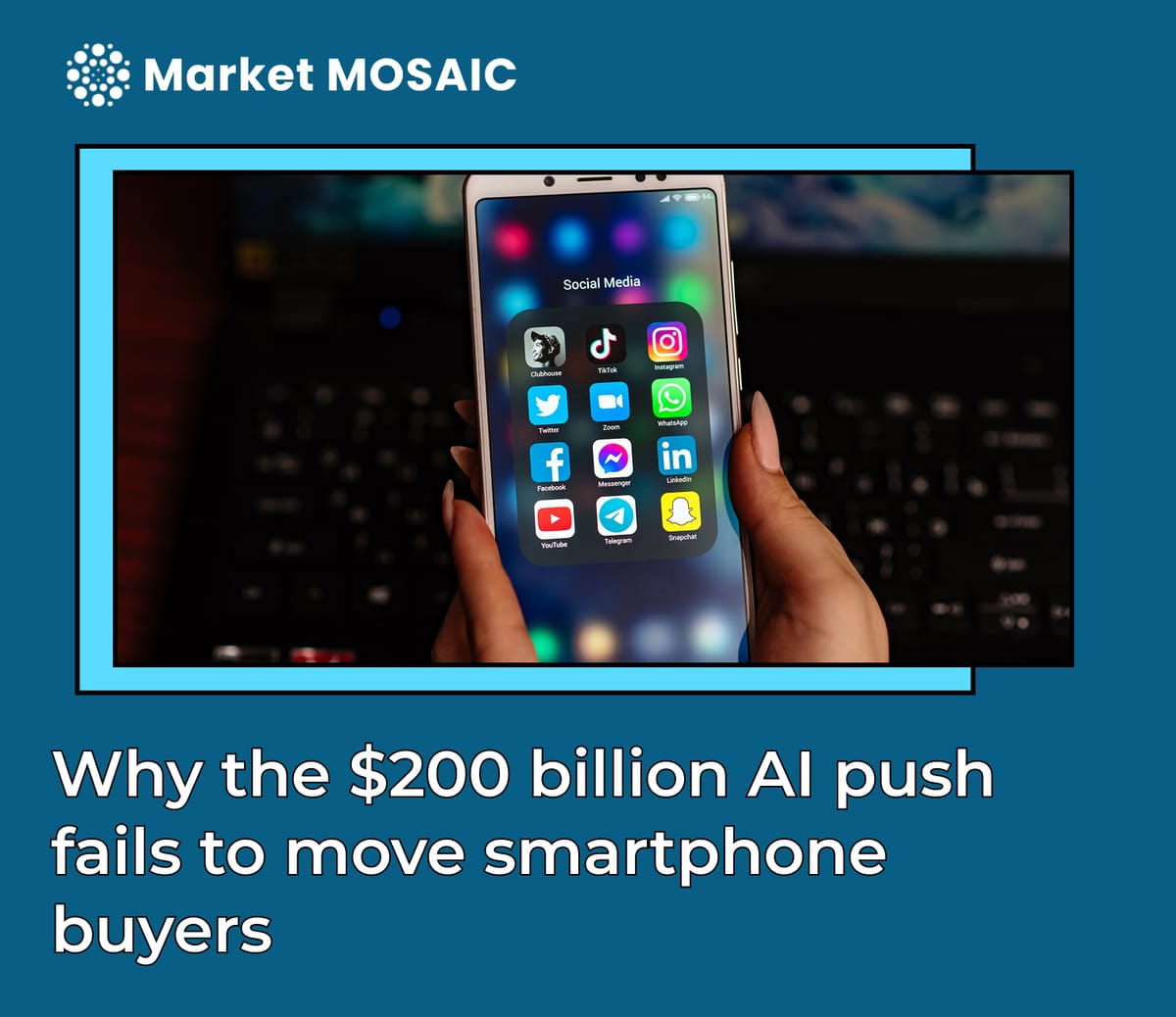Why the $200 billion AI push fails to move smartphone buyers

Smartphone makers have poured $200 billion into AI features, yet U.S. consumers remain skeptical. Price, battery life, and storage still drive purchases, highlighting a growing gap between industry hype and what users actually value
Smartphones before AI: fundamentals first
For most of the smartphone era, progress meant better fundamentals. Call clarity, network strength, camera quality, and battery life determined whether a device would succeed or fail. Price shaped adoption, while features like storage capacity and screen size became competitive battlegrounds.
The rise of AI as a selling point
In the last two years, the industry’s attention has turned toward something new. Since the breakthrough of ChatGPT in late 2022, vendors have poured billions of dollars into integrating artificial intelligence into smartphones. Apple introduced Apple Intelligence, Samsung launched Galaxy AI, and Google embedded Gemini into its Pixel line. According to Canalys, industry-wide investment in AI-powered capabilities has topped 200 billion dollars. AI is now marketed as the defining feature of the next generation of devices.
Consumer priorities: price over intelligence
The reality looks different from the marketing campaigns. A YouGov report found that only 11 percent of U.S. consumers would buy a new device primarily for AI features, a seven-point drop from last year. By comparison, 62 percent said price was their top priority, 54 percent focused on battery life, and 39 percent pointed to storage capacity. The core factors that shaped the industry over the last two decades continue to dominate.
The American Customer Satisfaction Index reinforces this picture. Based on 27,500 surveys conducted between April 2024 and March 2025, the study showed that Americans still judge smartphones by reliability and basics, not by AI. Nearly four out of five respondents said that a strong mobile signal remains more important than artificial intelligence.

Indifference in mature markets
Even among brand loyalists, the AI push has yet to land. A SellCell survey of more than 2,000 iPhone and Samsung users revealed that 73 percent of Apple customers and 87 percent of Samsung customers believe AI adds little or no value to their experience. Analysts point out that the industry has been promoting AI as a feature without clearly explaining what it does. As HP Newquist of The Relayer Group observed: “Companies are saying, ‘now with AI,’ but they’re not telling users what to do with it. And quite frankly, that’s not a compelling reason to use AI” (TechNewsWorld, 2025).
A tale of two markets
Globally, the divide is striking. Canalys’ Consumer AI Inclination Index shows that respondents in India and China report far greater enthusiasm for AI smartphones than those in the United States and Germany. In competitive, fast-growing markets with large tech-savvy populations, AI is perceived as part of the upgrade journey. In Western markets, by contrast, skepticism and indifference prevail.
Rethinking the generational gap
Contrary to expectations, younger users are not the most enthusiastic adopters. Only 23 percent of respondents under 25 expressed a strong inclination toward AI features, compared with 31 percent of those aged 35 to 44. Researchers suggest that disposable income, strong brand loyalty, and different perceptions of AI’s usefulness explain this reversal.
The barriers to adoption
The hesitation is fueled by trust and usability concerns. Forty percent of Americans worry about how AI manages personal data, while 60 percent believe it is primarily a tool for companies to collect more information. Battery life also remains a sticking point, with 38 percent concerned that AI will drain devices faster.
Glimmers of Opportunity
Despite the skepticism, there are signals of potential. About 63 percent of consumers believe AI could save them time, and 44 percent think it could make life easier. Voice assistants, advanced photo editing, and AI-powered search rank as the most valued features, particularly among younger users. Seven in ten people aged 18 to 34 say they use or plan to use at least one AI tool on their smartphones, compared with just 41 percent of those over 55.
The strategic lesson for leaders
Artificial intelligence will not sell itself. The early smartphone era was defined by tangible, visible improvements; better cameras, faster processors, longer-lasting batteries. To succeed in the AI era, vendors must show users how intelligence translates into everyday value, address privacy and performance concerns head-on, and tailor strategies to local markets. The smartphone industry has reached a turning point. AI may dominate product launches and investor calls, but for consumers, it remains an afterthought. Whether the 200-billion-dollar bet pays off will depend not on the sophistication of the models running on these devices, but on the industry’s ability to make artificial intelligence feel as indispensable as the fundamentals it once sidelined.





